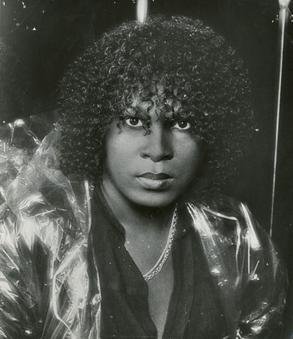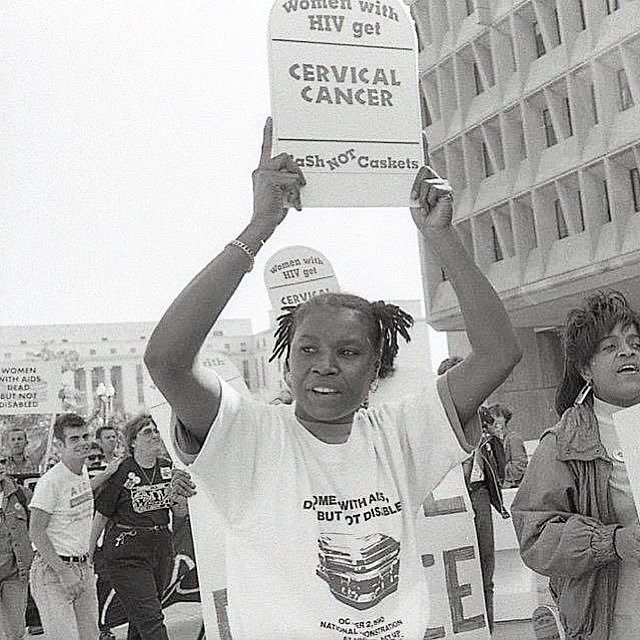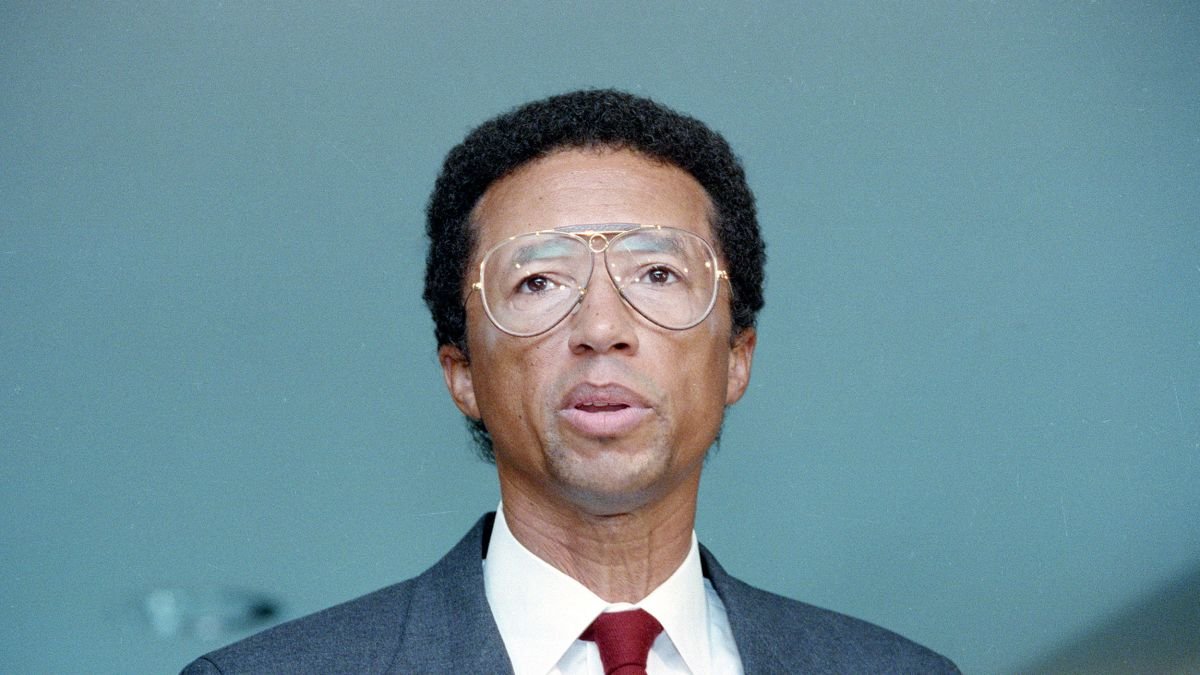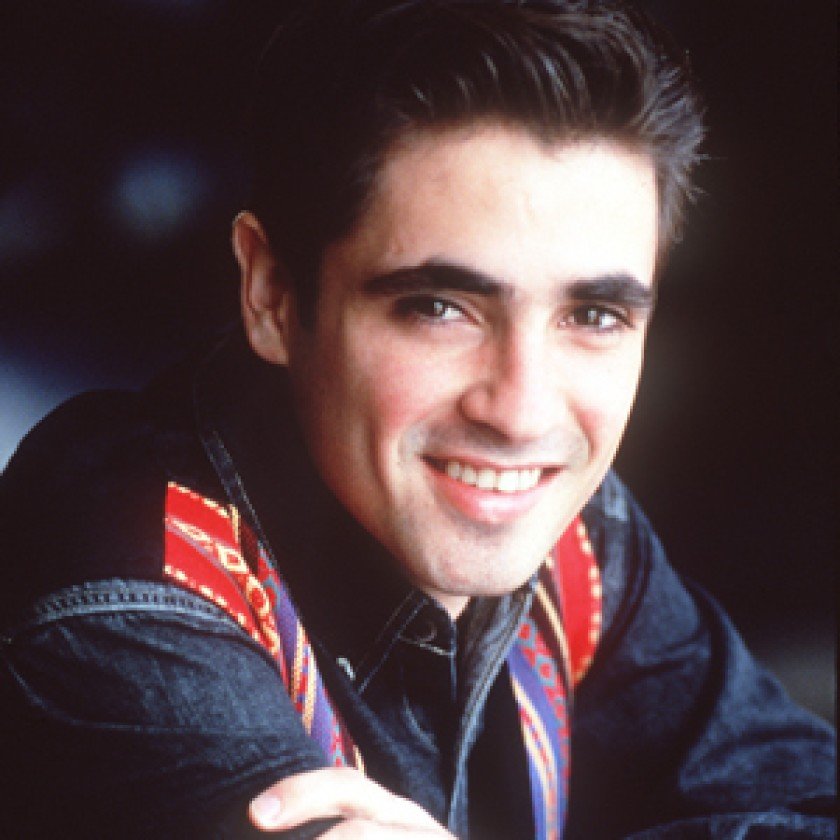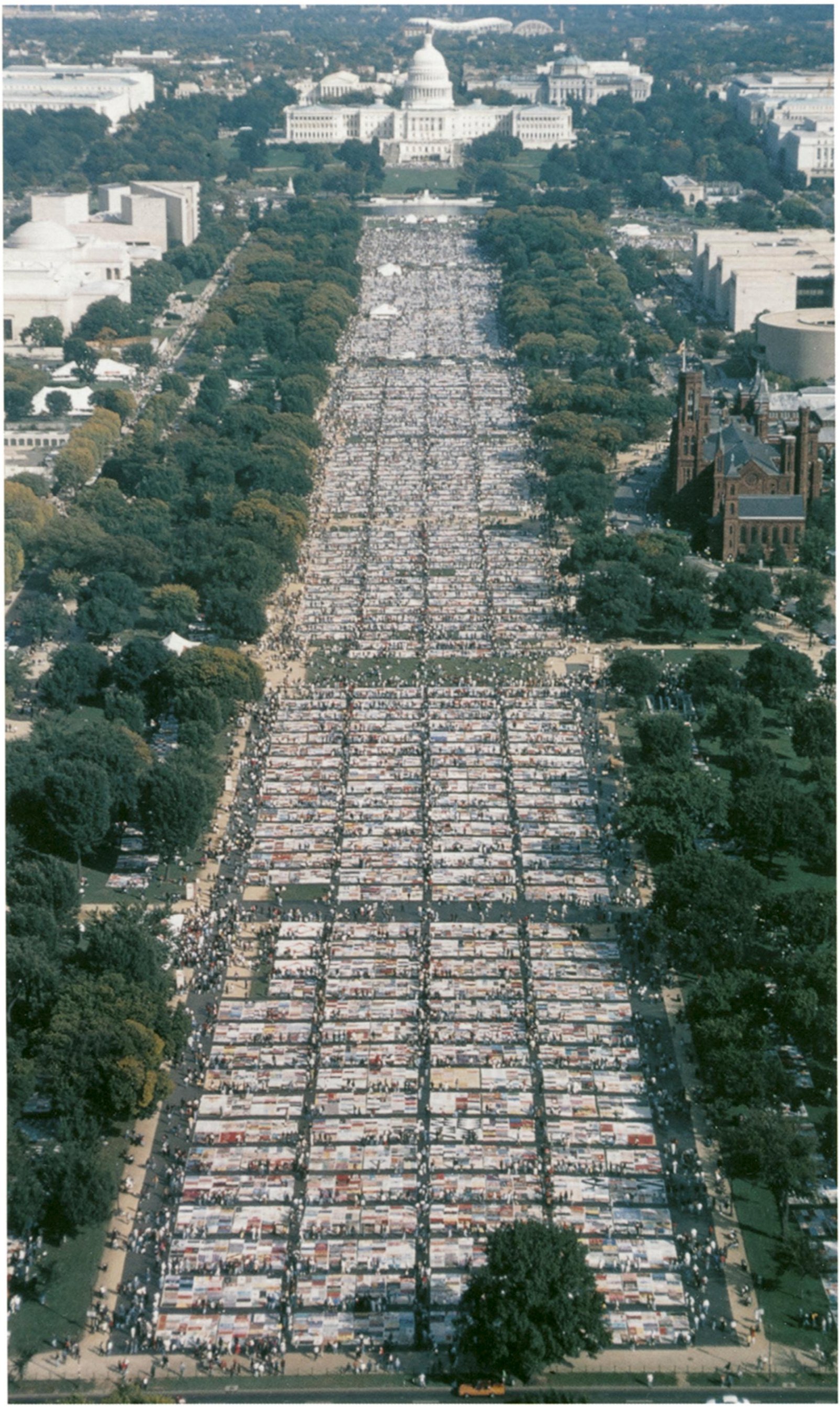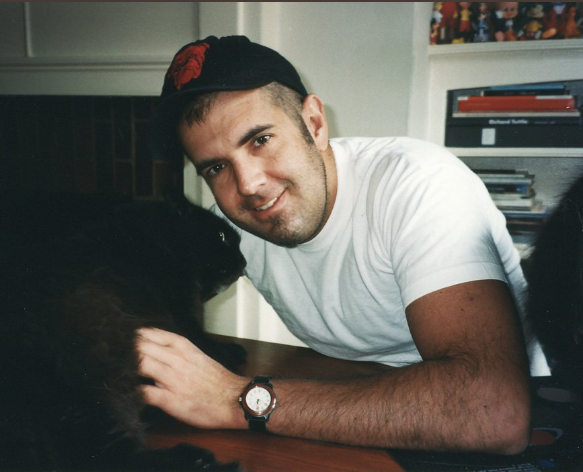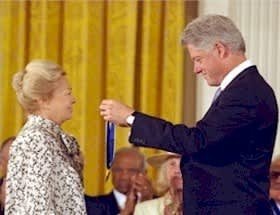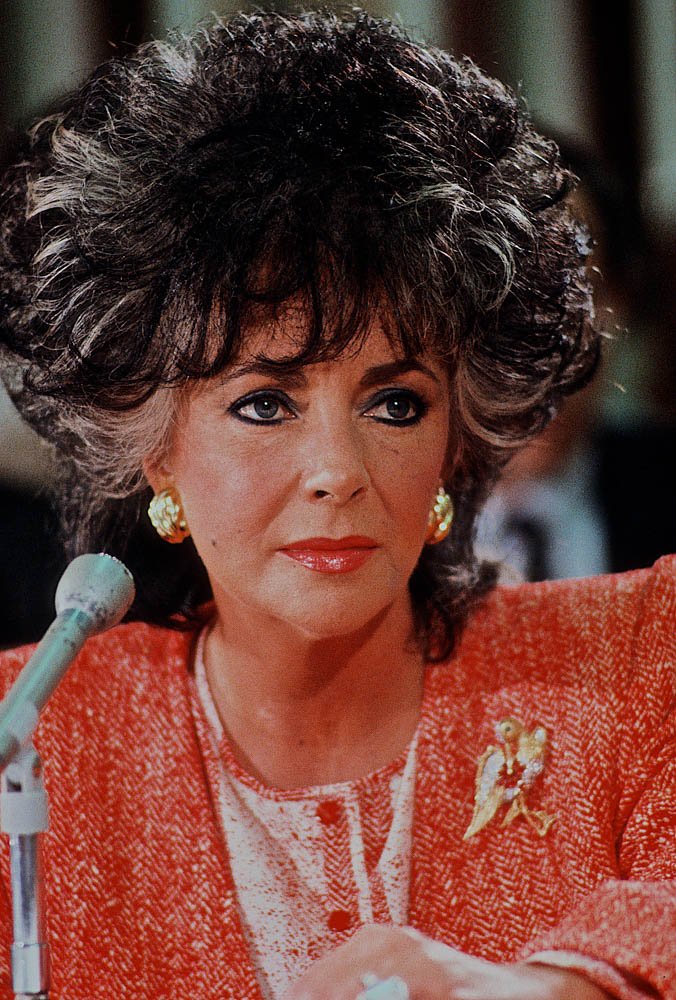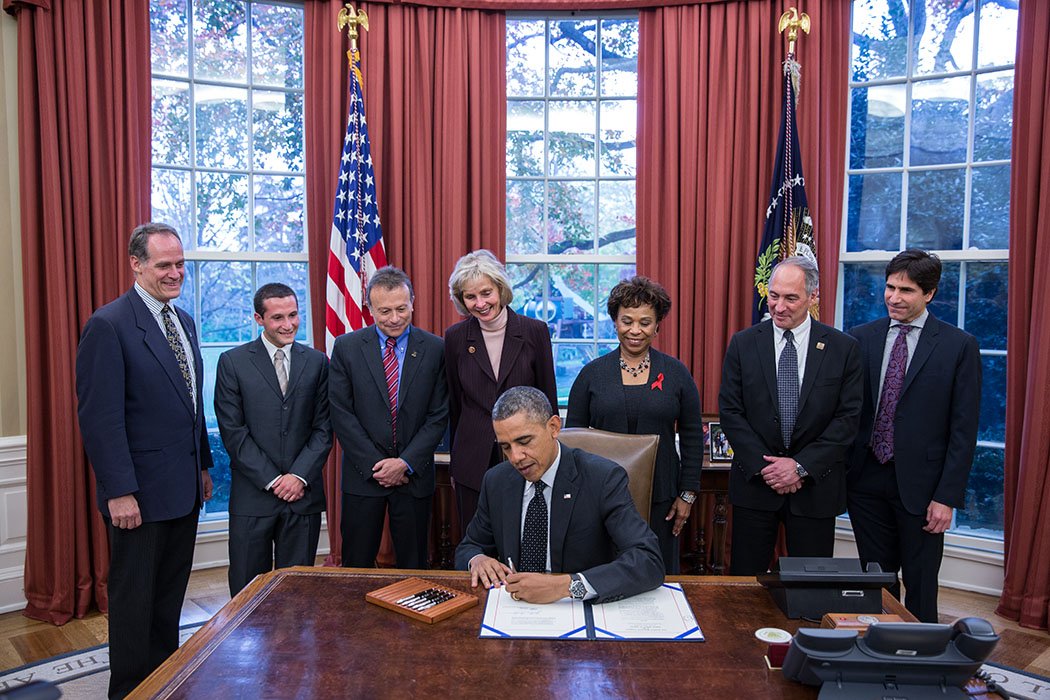HIV/AIDS Timeline
Content courtesy of amfAR, CDC, HIV.gov, and NYC DOH.
For HIV/AIDS information and resources in New York City, please visit the New York City Health Department. Use their NYC Health Map to find services in New York for HIV testing, HIV services for people living with HIV/AIDS, and NYC Condoms.
Pre-1981
New York City Statistics:
54 cumulative AIDS diagnoses
~15 deaths
In 1969, a St. Louis teenager, identified as Robert Rayford, dies of an illness that baffles his doctors. Eighteen years later, molecular biologists at Tulane University in New Orleans test samples of his remains and find evidence of HIV.
While sporadic cases of AIDS were documented before 1970, new research suggests that the current epidemic started in the mid-to-late 1970s. In this period, between 100,000 and 300,000 people could have already become HIV+.
In April 1980, a San Francisco resident was reported to the Center for Disease Control with Kaposi's sarcoma (KS)
In December 1980, a Brooklyn schoolteacher died of AIDS in New York City. During the fall of 1979, he sought medical advice about the hardened lymph nodes and odd purple skin rash he’d developed. After some testing, doctors diagnosed his rash as Kaposi’s sarcoma, but that was odd because this type of cancer, otherwise known as KS, usually occurred in aging men of Mediterranean ancestry, not someone in his thirties. Before the end of the next year, he didn’t just have KS. He’d developed an unusual lung infection, too. The illnesses overran his body, and he died on Christmas Eve, December 24, 1980. By some counts, he was the 4th US citizen known to die from the illness, though there were likely many, many more.
1981
New York City Statistics:
165 cumulative AIDS diagnoses
74 deaths
On May 18, Lawrence Mass becomes the first journalist in the world to write about the epidemic in the New York Native, a gay newspaper. A gay tipster overheard his physician mention that some gay men were being treated in intensive-care units in New York City for a strange pneumonia. "Disease Rumors Largely Unfounded" was the headline of Mass's article. Mass repeated a New York City public health official's claims that there was no wave of disease sweeping through the gay community. At this point, however, the Centers for Disease Control (CDC) had been gathering information for about a month on the outbreak that Mass's source dismissed.
Michael S. Gottlieb, Joel D. Weisman, et al., report five cases of homosexual men with Pneumocystis carinii pneumonia, a rare form of pneumonia usually found only in severely immunosuppressed patients. The report is published in the June 5, 1981, issue of the U.S. Centers for Disease Control and Prevention’s Morbidity and Mortality Weekly Report (MMWR).
July 3, 1981, MMWR reports 26 cases of Kaposi’s sarcoma (KS), a rare cancer, in homosexual men in both New York and California. The same day, the New York Times published the first mainstream news article about the mysterious new disease (pictured).
Also in July, Lawrence Mass publishes the first feature article on the epidemic in the New York Native. The title: "Disease Rumors Largely Unfounded."
Initial use of the term gay-related immune deficiency (GRID) or “gay cancer” by the media and others mistakenly suggests an inherent link between homosexuality and the new disease.
Acclaimed writer and film producer Larry Kramer (pictured bottom in 1987) holds a meeting of over 80 gay men in his New York City apartment to discuss the burgeoning epidemic. Kramer invites Dr. Alvin Friedman-Kien to speak, and he asks the group to contribute money to support his research because he has no access to rapid funding. The plea raises $6,635—essentially the only new money, public or private, that will be raised to fight the epidemic for the remainder of the year.
By year’s end, there is a cumulative total of 337 reported cases of individuals with a severe immune deficiency in the United States—321 adults/adolescents and 16 children under age 13. Of those cases, 130 are already dead by December 31.
1982
New York City Statistics:
775 cumulative AIDS diagnoses
273 deaths
Gay Men’s Health Crisis (GMHC), the first community-based AIDS service provider in the United States, was founded in New York City. In May, volunteer Rodger McFarlane sets up a GMHC information and counseling hotline on his home phone—he receives 100 phone calls from worried gay men the first night.
In addition to cases in men—particularly gay men—cases are reported in hemophiliacs and in a few women, infants, and recipients of blood transfusions. Transmission of an infectious agent through blood and sexual contact is strongly suspected.
The Los Angeles Times publishes the first front-page story on AIDS in the mainstream press: “Mysterious Fever Now an Epidemic.”
The Centers for Disease Control (CDC) establishes the term acquired immunodeficiency syndrome (AIDS) and identifies four “risk factors”: male homosexuality, intravenous drug use, Haitian origin, and hemophilia A.
Musician Patrick Cowley (pictured) dies of AIDS.
1983
U.S. Year End Statistics:
2,807 cases of AIDS reported
2,118
deaths
New York City Statistics:
1,891 cumulative AIDS diagnoses
858 deaths
Ward 86, the world’s first dedicated outpatient AIDS clinic, opens at San Francisco General Hospital. The clinic is a collaboration between the hospital and the University of California, San Francisco, and it draws staff who are passionate about treating people with AIDS. Over time, the staff developed the San Francisco Model of Care, which emphasizes: treating patients with compassion and respect, providing an array of health and social services in one facility, and collaborating closely with the local health department and community organizations. The model eventually becomes the global gold standard for HIV patient care.
At the Pasteur Institute in France, Drs. Francoise Barr-Sinoussi, Luc Montagnier, et al., isolate a new retrovirus from a French patient with AIDS symptoms. They call it lymphadenopathy-associated virus, or LAV.
Mervyn F. Silverman, Director of the San Francisco Department of Health, launches a citywide program to combat the local epidemic.
The AIDS Medical Foundation (AMF) is founded by Dr. Mathilde Krim, Dr. Joseph Sonnabend, Michael Callen, and others, as a New York-based AIDS research organization.
The first AIDS discrimination case was brought to court in the U.S. (The suit was filed by Dr. Sonnabend to prevent the eviction of his medical practice specializing in AIDS patients.)
The CDC warns blood banks of a possible problem with the U.S. blood supply and joins other government agencies in issuing the first recommendations for preventing sexual, drug-related, and occupational transmission of HIV.
AIDS activist Larry Kramer publishes a blistering assessment of the impact of AIDS on the gay community in the New York Native. The essay, “1,121 and Counting,” is a frantic plea for that community to get angry at the lack of government support for sick and dying gay men and the slow pace of scientific progress in finding a cause for AIDS.
AIDS activist Bobbi Campbell appears with his partner, Bobby Hilliard, on the cover of Newsweek magazine for the story, “Gay America: Sex, Politics, and the Impact of AIDS” (pictured top). It is the first time two gay men are pictured embracing one another on the cover of a U.S. mainstream national magazine.
AIDS cases have now been reported in 33 countries.
Musician Klaus Nomi (pictured bottom) dies of AIDS.
1984
U.S. Year End Statistics:
7,239 cases of AIDS reported
5,596
deaths
New York City Statistics:
3,770 cumulative AIDS diagnoses
1,965 total deaths
U.S. Department of Health and Human Services Secretary Margaret Heckler (pictured) announces that Dr. Robert Gallo and his colleagues at the National Cancer Institute have found the cause of AIDS, a retrovirus they have labeled HTLV-III. Heckler also announces the development of a diagnostic blood test to identify HTLV-III and expresses hope that a vaccine against AIDS will be produced within two years.
At the University of California, San Francisco, Dr. Jay A. Levy reports the isolation of a retrovirus from U.S. AIDS patients and healthy individuals in groups vulnerable to HIV. He calls it the AIDS-associated virus (ARV).
Scientists isolate a virus that causes an AIDS-like illness in monkeys.
The AIDS Medical Foundation distributes its first 18 basic research grants.
Philosopher Michel Foucault dies of AIDS. AIDS activist Bobbi Campbell dies of AIDS.
1985
U.S. Year End Statistics:
15,527 cases of AIDS reported
12,529
deaths
New York City Statistics:
6,680 cumulative AIDS diagnoses
3,799 total deaths
The federal government licenses an HIV antibody test, and screening of the U.S. blood supply begins.
Ryan White, a 13-year-old hemophiliac with AIDS, is barred from school in Indiana.
The first International AIDS Conference is held in Atlanta.
The U.S. Department of Defense announced it will begin testing all recruits for HIV and will reject those who test positive.
President Ronald Reagan mentioned AIDS publicly for the first time, calling it “a top priority” and defending his administration against criticisms that funding for AIDS research is inadequate.
Ricky Wilson of the B-52s dies of AIDS. Actor Rock Hudson (pictured) dies of AIDS at age 59. In his will, Hudson leaves $250,000 to help set up the American Foundation for AIDS Research (amfAR). Actress Elizabeth Taylor serves as the organization’s founding National Chairman.
AIDS has now been reported in 51 countries and on every continent except Antarctica.
1986
U.S. Year End Statistics:
28,712 cases of AIDS reported
24,559
deaths
New York City Statistics:
10,962 cumulative AIDS diagnoses
6,512 total deaths
The U.S. Center for Disease Control (CDC) reports that more people were diagnosed with AIDS in 1985 than in all earlier years combined. The 1985 figures show an 89% increase in new AIDS cases compared with 1984. Of all AIDS cases to date, 51% of adults and 59% of children have died. The new report shows that, on average, AIDS patients die about 15 months after the disease is diagnosed. Public health experts predict twice as many new AIDS cases in 1986.
In the first comprehensive report on AIDS, the Institute of Medicine states that $2 billion is needed annually for AIDS research and care.
U.S. Surgeon General C. Everett Koop calls for a comprehensive program of sex and AIDS education. The report makes it clear that HIV cannot be spread casually and calls for a nationwide education campaign (including early sex education in schools), increased use of condoms, and voluntary HIV testing.
The National Institutes of Health (NIH) plans the formation of its AIDS Clinical Trials Group (ACTG).
The first controlled efficacy trial of AZT is undertaken by the NIH.
In West Africa, a second type of HIV, HIV-2, is discovered in commercial sex workers.
Designer Perry Ellis dies of AIDS. Jerry Smith dies of AIDS. Model Gia Carangi dies of AIDS. Photographer Peter Hujar (pictured) dies of AIDS.
© The Peter Hujar Archive
1987
U.S. Year End Statistics:
50,278 cases of AIDS reported
40,849
deaths
New York City Statistics:
16,243 cumulative AIDS diagnoses
9,866 total deaths
In February, AIDS activist Cleve Jones (pictured top with Gert McMullin) created the first panel of the AIDS Memorial Quilt to honor his friend Marvin Feldman, who died on October 10, 1986, of AIDS-related illness at age 33. The quilt panels are 3 feet wide by 6 feet long—the size and shape of a typical grave plot.
Approved in record time, zidovudine (AZT) became the first anti-HIV drug approved by the Food and Drug Administration (FDA). (At $10,000 for a one-year supply, AZT is the most expensive drug in history.)
AIDS activist Larry Kramer founded the AIDS Coalition to Unleash Power - ACT UP - in New York City (pictured center) Kramer’s goal is to create a political direct-action group that will force governments, elected officials, public health agencies, pharmaceutical and insurance industries, and religious institutions to act to protect those vulnerable to HIV and those who are sick with AIDS. TIME Magazine calls ACT UP “the most effective health activist [group] in history” for “pressuring drug companies, government agencies and other powers that stood in their way to find better treatments for people with AIDS — and, in the process, improving the way drugs are tested and approved in the U.S.”
Researchers realize that virtually all cases of HIV acquisition ultimately lead to AIDS, but only after a long incubation period.
Debra Fraser-Howze, director of teenage services at the Urban League of New York, founds the National Black Leadership Commission on AIDS. The organization works to educate, mobilize, and empower black leaders to meet the challenge of fighting HIV/AIDS and other health disparities in their local communities.
And the Band Played On, a history of the AIDS epidemic by reporter Randy Shilts, is published.
The U.S. government bars HIV-positive immigrants and travelers from entering the country.
The Food and Drug Administration allows condom-makers to advertise the fact that latex condoms can help prevent the transmission of HIV and other sexually transmitted diseases.
The CDC expands its definition of AIDS to include wasting syndrome and dementia.
Michael Bennett dies of AIDS. Liberace dies of AIDS. Fashion designer Willi Smith (pictured bottom) dies of AIDS. Gay Games founder Tom Waddell dies of AIDS.
AIDS Memorial Quilt co-founders Cleve Jones and Gert McMullin, 1987
1988
U.S. Year End Statistics:
82,362 cases of AIDS reported
61,816
deaths
New York City Statistics:
22,779 cumulative AIDS diagnoses
14,157 total deaths
Congress passes the first comprehensive AIDS legislation—the Hope Act of 1988.
amfAR funds research to evaluate the effectiveness of pilot needle exchange programs in San Francisco and Portland, Oregon. These early studies indicate that making sterile syringes available can help reduce HIV transmission rates among injection drug users.
In New York City, new AIDS cases that result from shared needles exceed those attributable to sexual contact, and the city’s Health Department has begun an experimental needle exchange program.
ACT UP demonstrates at FDA headquarters to protest the slow pace of AIDS drug approval.
The federal government mails an educational pamphlet, “Understanding AIDS,” to 107 million homes nationwide.
Anthony Fauci, M.D., is named acting director of NIH’s new Office of AIDS Research.
World AIDS Day is observed for the first time. The date is designated by the World Health Organization and supported by the United Nations. The theme for the observance is “Join the Worldwide Effort.”
Sylvester (pictured top) dies of AIDS. Wayland Flowers dies of AIDS. Paul Thek dies of AIDS. Arnie Zane (pictured bottom, with Bill T. Jones) dies of AIDS.
1989
U.S. Year End Statistics:
117,508 cases of AIDS reported
89,343
deaths
New York City Statistics:
29,807 cumulative AIDS diagnoses
19,494 total deaths
The NIH funds 17 community-based AIDS clinical research units as part of a federally sponsored research program.
As a result of CBCT trials, the FDA approves treatments for AZT-induced anemia and Mycobacterium avium complex and a new method of preventing pneumonia.
The U.S. Congress creates the National Commission on AIDS. The Commission meets for the first time on September 18.
Photographer Robert Mapplethorpe (pictured) dies of AIDS. Photographer Mark Morrisroe dies of AIDS. Choreographer Alvin Ailey dies of AIDS. Actress and author Cookie Mueller dies of AIDS.
1990
U.S. Year End Statistics:
160,969 cases of AIDS reported
120,453
deaths
New York City Statistics:
37,800 cumulative AIDS diagnoses
25,219 total deaths
Congress passed the Americans with Disabilities Act, which protects individuals with disabilities, including both people with HIV/AIDS and those suspected of being HIV-positive, from discrimination.
Surveillance data indicate that while black and Latina women constitute just 19% of all U.S. women, they represent 72% of U.S. women diagnosed with AIDS.
Domestic and international groups boycott the VI International AIDS Conference in San Francisco to protest the U.S. immigration policy banning HIV-positive visitors.
In August, the U.S. Congress enacted the Ryan White Comprehensive AIDS Resources Emergency (CARE) Act of 1990 (PDF 8.3 MB), which provides $220.5 million in Federal funds for HIV community-based care and treatment services in its first year. The US Health Resources and Services Administration (HRSA) manages the program, which is the nation’s largest HIV-specific Federal grant program.
Ryan White (pictured top) dies of AIDS. Artist Keith Haring (pictured bottom) dies of AIDS. Fashion designer Halston dies of AIDS. Photographer Tseng Kwong Chi dies of AIDS. Performer Ethyl Eichelberger dies of AIDS. Author and activist Vito Russo dies of AIDS.
To date, nearly twice as many Americans have died of AIDS-related causes as died in the Vietnam War.
1991
U.S. Year End Statistics:
206,563 cases of AIDS reported
156,143
deaths
New York City Statistics:
47,027 cumulative AIDS diagnoses
31,697 total deaths
The CDC reports that one million Americans are HIV-positive.
The World Health Organization estimates that nearly 10 million people with HIV worldwide.
The Visual AIDS Artists Caucus launches the Red Ribbon Project to create a visual symbol to demonstrate compassion for people living with AIDS and their caregivers. The red ribbon becomes the international symbol of AIDS awareness.
Congress enacts the Housing Opportunities for People with AIDS (HOPWA) Act of 1991 to provide housing assistance to people with HIV/AIDS.
Basketball star Earvin “Magic” Johnson (pictured top) announces that he is living with HIV.
Queen frontman Freddie Mercury (pictured bottom) dies of AIDS. Composer Howard Ashman dies of AIDS.
1992
U.S. Year End Statistics:
254,147 cases of AIDS reported
194,476
deaths
New York City Statistics:
58,174 cumulative AIDS diagnoses
38,635 total deaths
Both the Democratic and Republican national conventions are addressed by HIV-positive women. On July 14, 1992, activist Elizabeth Glaser gave a landmark speech on the AIDS epidemic at the Democratic National Convention in New York City, and on August 19, 1992, at the 1992 Republican Convention in Houston, Texas, activist Mary Fisher would give a speech, titled “A Whisper of AIDS.” Later, The New York Times credited Fisher and Glaser with having "brought AIDS home to America."
The first clinical trial of combination antiretroviral therapy begins.
The FDA issues new rules that allow accelerated approval of new AIDS drugs based on “surrogate markers” of their efficacy, such as laboratory tests, rather than long-term clinical outcomes such as the relief of symptoms or prevention of disability and death.
In New York City, amfAR undertakes the largest and most comprehensive study of syringe exchange programs in the U.S. The research is designed to provide solid data on which to base future public policy.
AIDS has become the number one cause of death for U.S. men ages 25 to 44.
Artist David Wojnarowicz dies of AIDS. Both Alison Gertz (pictured top), a young, affluent, New Yorker who shared her story of becoming HIV+ in 1989 and later became an AIDS activist, speaking with teenagers on the subject of safe sex and founding the nonprofit Love Heals, and Katrina Haslip (pictured center), an AIDS educator and activist who played an essential role in the campaign to change the criteria for government recognition of AIDS to include the symptoms uniquely experienced by women through co-founding AIDS Committee for Education (ACE) for women incarcerated at Bedford Hills Correctional Facility for Women and its counterpart ACE-OUT for women leaving prison, both die of AIDS. Musician Arthur Russell dies of AIDS. Model and jewelry designer Tina Chow dies of AIDS. Actor Anthony Perkins dies of AIDS. Actor Robert Reed, famous for playing TV dad Mike Brady on The Brady Bunch dies of AIDS. Florida teenager Ricky Ray dies of AIDS-related illness on December 13. The 15-year-old hemophiliac and his two younger brothers (pictured bottom) sparked a national conversation on AIDS after their court battle to attend school in their hometown of Arcadia, Florida, led to boycotts by local residents and the torching of their home, forcing the family to leave their hometown forever. “Arcadia is no longer our home,” their father, Clifford Ray, told the press the day after the fire. “That much was made clear to us last night.”
Creator: Images Press | Credit: Getty Images
1993
U.S. Year End Statistics:
360,909 cases of AIDS reported
194,476
deaths
New York City Statistics:
71,129 cumulative AIDS diagnoses
46,060 total deaths
President Clinton establishes a new White House Office of National AIDS Policy.
In major U.S. cities, sexual transmission surpasses drug injection with contaminated needles as the leading cause of HIV among women.
AIDS patients start to show signs of resistance to AZT.
The CDC’s decision to revise its definition of AIDS to include new opportunistic infections, cervical cancer, and HIV-positive people with T-cell counts under 200 results in a 111% increase in the number of U.S. AIDS cases. Many of these new cases are among women.
A three-year European study shows no evidence that AZT delays the onset of AIDS.
The FDA approves a female condom for sale in the U.S.
Tom Hanks (pictured top, in character) wins an Oscar for his role as a gay man with AIDS in the film “Philadelphia.” “Angels in America,” Tony Kushner’s play about AIDS, wins the Tony Award for Best Play and the 1993 Pulitzer Prize for Drama.
Tennis legend Arthur Ashe (pictured bottom) dies of AIDS. Ballet dancer Rudolf Nureyev dies of AIDS. Activist and singer Michael Callen dies of AIDS.
1994
U.S. Year End Statistics:
360,909 cases of AIDS reported
194,476
deaths
New York City Statistics:
83,839 cumulative AIDS diagnoses
54,409 total deaths
An NIH-funded trial demonstrates that AZT can reduce perinatal HIV transmission in humans.
U.S. Surgeon General Joycelyn Elders, a vocal advocate for increased AIDS education, is forced to resign.
David Ho and George Shaw show that following an initial acquisition, HIV replicates in the body continuously, producing billions of copies each day.
AIDS has become the leading cause of death for all Americans ages 25 to 44.
Elizabeth Glaser dies of AIDS. Randy Shilts dies of AIDS. Leigh Bowery dies of AIDS. Derek Jarman dies of AIDS. Felix Partz and Jorge Zontal, two-thirds of the Canadian art collective General Idea whose iconic work AIDS is pictured top, die of AIDS. Pedro Zamora (pictured bottom), a young gay man living with HIV, appears on the cast of MTV’s popular show, “The Real World.” He dies on November 11 at age 22.
General Idea, AIDS, 1987, © 2022 General Idea
1995
U.S. Year End Statistics:
513,486 cases of AIDS reported
319,849
deaths
New York City Statistics:
95,376 cumulative AIDS diagnoses
62,739 total deaths
AIDS deaths in the U.S. have reached an all-time high.
Between 1991 and 1995, the number of American women diagnosed with AIDS increased by more than 63%.
A clinical trial establishes dual combination therapy with AZT and other nucleoside analogs as a standard approach for HIV treatment.
In June, the U.S. Food and Drug Administration (FDA) approves the first protease inhibitor. This ushers in a new era of highly active antiretroviral therapy (HAART).
President Clinton establishes the President’s Advisory Council on HIV/AIDS.
Rapper Eric Lynn Wright (known as Eazy-E) dies of AIDS. Paul Monette dies of AIDS. Greg Louganis, the Olympic gold medal diver, discloses that he is HIV-positive.
1996
U.S. Year End Statistics:
581,429 cases of AIDS reported
362,004
deaths
New York City Statistics:
104,902 cumulative AIDS diagnoses
68,814 total deaths
For the first time in the U.S., a larger proportion of AIDS cases occur among African Americans (41%) than among whites (38%).
The FDA approved the first non-nucleoside reverse transcriptase inhibitor (nevirapine), as well as a new viral load test that can measure the level of HIV in a patient’s blood.
Combination therapy is made available to HIV/AIDS patients for the first time, leading to a dramatic decline in AIDS-related deaths.
HIV/AIDS researcher Dr. David Ho advocates for a new strategy for treating HIV – “hit early, hit hard,” in which patients are placed on new, more aggressive treatment regimes earlier in the course of the disease in hopes of keeping them healthier longer. He is subsequently named TIME Magazine’s “Man of the Year.”
The Joint United Nations Programme on AIDS (UNAIDS) was established to coordinate a global response to the pandemic.
Reports from the XI International Conference on AIDS in Vancouver, Canada, indicate that new combination therapies that include a protease inhibitor are extending the lives of some HIV/AIDS patients.
The first home HIV test is approved by the FDA.
As published in The Lancet, the results of a four-year study of syringe exchange programs in New York City show that such programs reduce HIV transmissions by two-thirds and facilitate access to drug treatment and other health care services.
For the first time since the start of the epidemic, the number of Americans dying from AIDS has declined, dropping 23% from the previous year. The decline is attributed primarily to the success of the new combination therapies.
In October, the AIDS Memorial Quilt is displayed in its entirety for the last time (pictured top). It covers the entire National Mall in Washington, DC.
The U.N. estimates that 22.6 million people are HIV-positive and 6.4 million people have died of AIDS-related causes worldwide.
Félix González-Torres (pictured bottom) dies of AIDS.
1997
U.S. Year End Statistics:
641,086 cases of AIDS reported
390,692
deaths
New York City Statistics:
112,348 cumulative AIDS diagnoses
72,244 total deaths
AIDS patients continue to live longer thanks to the new anti-HIV therapies, dubbed drug “cocktails,” and AIDS deaths in the U.S. have declined by 42%. However, the number of new HIV acquisitions among Americans has remained constant at about 40,000 annually since 1992.
President Clinton calls for the development of an AIDS vaccine by 2007.
Nigerian musician, bandleader, composer, and father of Afrobeat, Fela Anikulapo-Kuti (pictured) dies of AIDS.
1998
U.S. Year End Statistics:
688,200 cases of AIDS reported
410,800
deaths
New York City Statistics:
118,132 cumulative AIDS diagnoses
75,028 total deaths
AIDS deaths in the U.S. declined by 21%. However, the limitations of existing treatments, including the emergence of drug-resistant viral strains, cause scientists to predict that there will be no further significant declines.
Physicians express increasing concern over lipodystrophy and other side effects of current anti-HIV drugs.
Early hope that combination therapy might affect a clinical cure for AIDS fades.
Jack Nunberg and Dan Littman developed a “fusion competent” vaccine concept that remains one of the most promising approaches in AIDS vaccine research.
U.S. Department of Health and Human Services Secretary Donna Shalala determines that needle exchange programs are effective in preventing HIV transmission and do not encourage illegal drug use. But the Congressional ban on federal funding of such programs remains in place.
African American leaders, including members of the Congressional Black Caucus (CBC), are briefed on the highly disproportionate impact of HIV and AIDS in their communities. They developed a “Call to Action,” requesting that the President and Surgeon General declare HIV/AIDS a “State of Emergency” in the African American community.
1999
U.S. Year End Statistics:
733,374 cases of AIDS reported
429,825
deaths
New York City Statistics:
123,559 cumulative AIDS diagnoses
77,825 total deaths
The World Health Organization (WHO) announces that HIV/AIDS has become the fourth biggest killer worldwide and the number one killer in Africa. WHO estimates that 33 million people are living with HIV worldwide and that 14 million have died of AIDS-related causes. In over 27 countries, the HIV rate has doubled since 1996. More than 95% of all HIV-positive people now live in the developing world, which has experienced 95% of AIDS deaths to date.
Experts estimate that at least half of all new HIV acquisitions in the U.S. (and worldwide) occur among young people under the age of 25.
Women now account for 23% of AIDS cases in the U.S., as opposed to only 7% in 1985. One-third of new HIV acquisitions occur among women, and young women are at particularly high risk. In sub-Saharan Africa, the epicenter of the global epidemic, 55% of all HIV-positive adults are women.
Scientists identify nevirapine as simpler, more effective, and cheaper than AZT for preventing mother-to-infant HIV transmission in developing countries.
T-20, one of a new class of anti-HIV drugs called “fusion inhibitors,” begins clinical trials. Efforts are also underway to develop related “binding inhibitors,” many of which target the CCR5 co-receptor discovered by Dr. Nathaniel Landau.
The first National Black HIV/AIDS Awareness Day (NBHAAD) is launched as a grassroots education effort to raise awareness about HIV and AIDS prevention, care, and treatment in communities of color.
2000
U.S. Year End Statistics:
774,467 cases of AIDS reported
448,060
deaths
New York City Statistics:
129,914 cumulative AIDS diagnoses
80,544 total deaths
On April 30, President Clinton declared that HIV/AIDS is a threat to U.S. national security.
UNAIDS and other global health groups announce a joint initiative with five major pharmaceutical companies to negotiate reduced AIDS drug prices in developing countries.
The CDC reports that black and Latino men now account for more AIDS cases among men who have sex with men (MSM) than white men.
The XIII International AIDS Conference in Durban, South Africa, focuses world attention on the exploding epidemic in sub-Saharan Africa, where millions of people with HIV/AIDS have little or no access to medical treatment.
In conjunction with the Durban conference, amfAR placed a full-page ad in The New York Times headlined “HIV causes AIDS. To argue otherwise costs lives.” A response to a small but vocal minority who question the cause of AIDS, the ad is signed by over 500 scientists and physicians.
Mathilde Krim is awarded the Presidential Medal of Freedom in recognition of her leadership in creating the AIDS Medical Foundation in 1983 and amfAR in 1985, and her commitment to the fight against AIDS (pictured_.
UNAIDS reports that 36.1 million people are now living with HIV/AIDS, over 13 million children have lost one or both parents to AIDS, and nearly 22 million people have died of AIDS-related causes since the epidemic began.
2001
U.S. Year End Statistics:
816,149 cases of AIDS reported
462,653
deaths
New York City Statistics:
135,650 cumulative AIDS diagnoses
83,154 total deaths
Indian drug maker Cipla announces it will sell triple-drug therapy for $350 per patient per year to Médecins Sans Frontières and directly to poor nations, prompting several major pharmaceuticals to lower prices. (In the U.S., the annual cost of combination therapy averages between $10,000 and $15,000.)
Recognizing the debilitating side effects associated with combination therapy and the speed with which HIV can develop resistance, the CDC issues new guidelines recommending that antiretroviral treatment be postponed until an individual’s immune system declines markedly.
A new study shows that 14% of individuals who have recently acquired HIV in the U.S. already exhibit resistance to at least one antiviral drug.
Pharmaceutical companies withdraw their lawsuit to block the implementation of a South African law that permits the import and manufacture of generic antiretrovirals.
U.N. Secretary-General Kofi Annan calls for the creation of a $7 to $10 billion global fund to combat AIDS in the developing world.
A special session of the United Nations General Assembly is held June 25-27 to intensify international action to fight the epidemic and mobilize adequate resources.
U.S. Secretary of State Colin Powell reaffirms the position that HIV/AIDS constitutes a national security threat.
AIDS organizations and advocates commemorate the 20th anniversary of a brutal, unrelenting epidemic.
If current trends remain unchanged, there will be more than 62 million people living with HIV/AIDS by 2005, and more than 40 million children will have been orphaned by AIDS in Africa alone by 2010.
Nkosi Johnson (pictured), a South African child with HIV and AIDS who greatly influenced public perceptions of the pandemic and its effects, dies at the age of 12. At the time of his death, he was the longest-surviving child born HIV-positive in South Africa.
2002
U.S. Year End Statistics:
886,000 cases of AIDS reported
501,669
deaths
New York City Statistics:
140,474 cumulative AIDS diagnoses
85,710 total deaths
The Global Fund to Fight AIDS, Tuberculosis, and Malaria—a partnership between government, civil society, the private sector, and affected communities—is established.
AIDS is the leading cause of death worldwide among people aged 15-59. 10 million young people, aged 15-24, and almost 3 million children under 15 are living with HIV worldwide. During this year, approximately 3.5 million new transmissions will occur in sub-Saharan Africa, and the epidemic will claim the lives of an estimated 2.4 million Africans.
The FDA approves the OraQuick “finger prick” Rapid HIV-1 Antibody Test.
2003
U.S. Year End Statistics:
930,000 cases of AIDS reported
501,669
deaths
New York City Statistics:
145,905 cumulative AIDS diagnoses
88,263 total deaths
During his State of the Union address, President George W. Bush announces his Emergency Plan for AIDS Relief (PEPFAR), a five-year, $15 billion initiative to fight HIV/AIDS, primarily in Africa and the Caribbean.
AIDSVAX, an experimental AIDS vaccine, fails to block HIV transmission among the more than 2,000 intravenous drug users who volunteered for the first large-scale clinical trial of an AIDS vaccine.
T-20, or Fuzeon, first tested by Dr. Carl Wild, is approved by the FDA, offering new hope to thousands of patients who are resistant to other anti-HIV drugs. (See 1993.)
UNAIDS and the World Health Organization announced the ‘3 by 5’ Initiative aimed at providing antiretroviral treatment to 3 million people worldwide by 2005.
October 15 marks the first annual National Latino AIDS Awareness Day in the U.S.
2004
U.S. Year End Statistics:
940,000 cases of AIDS reported
529,113
deaths
New York City Statistics:
150,414 cumulative AIDS diagnoses
90,646 total deaths
The International AIDS Conference takes place in Bangkok, Thailand, marking the first time the conference is held in Southeast Asia.
The FDA approves the use of oral fluid samples with a rapid HIV diagnostic test kit that provides screening results with 99 percent accuracy in as little as 20 minutes.
A United Nations report warns of the growing AIDS crisis in Eastern Europe and the former Soviet Union.
15 million children worldwide have lost one or both parents to HIV/AIDS.
2005
UNAIDS estimates that more than
40 million people are living with HIV worldwide.
New York City Statistics:
154,709 cumulative AIDS diagnoses
93,003 total deaths
The CDC reports that more than one million Americans are living with HIV/AIDS.
Nelson Mandela announces the death of his son from AIDS-related complications.
The FDA approves Kaletra as the first once-a-day treatment option.
Bing Chen and Rosa Cardoso achieved separate breakthrough discoveries that could help speed the discovery of an effective AIDS vaccine.
Kenneth Cole, KNOW HIV/AIDS, a joint public education initiative of Viacom Inc. and the Kaiser Family Foundation, and amfAR launched a new AIDS awareness campaign, “We All Have AIDS,” to reduce the stigma associated with HIV/AIDS.
A new report released by the World Health Organization and UNAIDS shows that the number of people on HIV antiretroviral treatment in developing countries has more than tripled since 2003 to 1.3 million.
2006
New York City Statistics:
158,617 cumulative AIDS diagnoses
95,157 total deaths
June 5 marks 25 years since the first AIDS cases were reported.
The CDC reports that African Americans account for more than half of new HIV acquisitions in the U.S.
The CDC announces that mother-to-child HIV transmission in the U.S. has declined to less than two percent.
The FDA approves the world’s first anti-HIV drug that is taken once per day as a single pill.
The CDC recommends that all adolescents and adults be routinely tested for HIV.
2007
CDC reports over
565,000 people have died of AIDS-related causes in the U.S. since 1981.
New York City Statistics:
162,369 cumulative AIDS diagnoses
97,219 total deaths
The Global Fund to Fight AIDS, Tuberculosis and Malaria more than doubles the number of patients receiving ARVs to more than 1.4 million.
Congress overturns the ban on using local taxpayer dollars to support syringe exchange programs in Washington, D.C.
New UNAIDS statistics, based on new surveillance methods, estimate that 33 million people are living with HIV/AIDS.
2008
New York City Statistics:
165,805 cumulative AIDS diagnoses
99,258 total deaths
Nolwenn Jouvenet captures on film the birth of the new HIV particles—the first time the birth of any virus was recorded.
Revised CDC estimates reveal that 56,300 new HIV transmissions occurred in the U.S. in 2006—40 percent more than previously estimated.
Professor Luc Montagnier and Professor Francoise Barre-Sinoussi, share the 2008 Nobel Prize in Medicine for the 1983 discovery of a new retrovirus later named HIV.
The story of a man who was cured of HIV—known as “the Berlin Patient”—is first reported in The New England Journal of Medicine. The man, who also had leukemia, underwent a risky stem-cell transplant to eradicate his cancer while also receiving new cells with a naturally occurring, HIV-blocking CCR5 mutation.
September 18 is the first observance of National HIV/AIDS and Aging Awareness Day.
National Gay Men’s HIV/AIDS Awareness Day is first recognized on September 27.
2009
New York City Statistics:
168,958 cumulative AIDS diagnoses
101,161 total deaths
The U.S. House of Representatives lifts the 20-year ban on federal funding for syringe exchange programs.
The U.S. ends the travel ban on HIV-positive visitors and immigrants. The ban had been in place since 1987.
June 8 marks the first annual recognition of Caribbean American HIV/AIDS Awareness Day.
On October 6, the U.S. Food and Drug Administration (FDA), in association with the PEPFAR program, approves the 100th antiretroviral drug.
2010
New York City Statistics:
171,583 cumulative AIDS diagnoses
102,897 total deaths
The first HIV-positive visitor freely enters the US after the lifting of the travel ban.
The White House unveils the National HIV/AIDS Strategy—the first of its kind—that sets goals for reducing HIV incidence, increasing access to care, and reducing health-related disparities.
A study released at the XVIII International AIDS Conference in Vienna shows that a vaginal microbicide applied before heterosexual sex can protect some women from HIV.
The number of people receiving HIV/AIDS treatment in low- and middle-income countries reached a record high of 5.25 million, but universal access remains a distant goal.
A landmark study shows that taking HIV drugs preventatively could significantly reduce transmission among men who have sex with men (MSM).
2011
More than 1.1 million
people living with HIV/AIDS in the United States.
More than 33 million
people living with HIV/AIDS worldwide.
New York City Statistics:
173,950 cumulative AIDS diagnoses
104,626 total deaths
Scientific interest in the search for a cure for HIV/AIDS intensified as the International AIDS Society and the NIH announced plans to launch their cure initiatives.
A landmark research study shows that putting healthy people living with HIV on antiretrovirals can limit their transmission of the virus by 96 percent.
Actress, AIDS activist, and amfAR co-founder Elizabeth Taylor (pictured) dies at 79 and is remembered around the world for her pioneering contributions to the fight against HIV/AIDS.
2012
New York City Statistics:
176,044 cumulative AIDS diagnoses
106,189 total deaths
The Kaiser Family Foundation and the Washington Post released a joint survey of the American public’s attitudes, awareness, and experiences related to HIV and AIDS. The survey finds that roughly a quarter of Americans do not know that HIV cannot be transmitted by sharing a drinking glass—almost the same share as in 1987.
The FDA approved the first at-home HIV test that will let users learn their HIV status right away.
The FDA approves the use of Truvada® for pre-exposure prophylaxis (PrEP). Adults who do not have HIV, but who are vulnerable, can now take this medication to reduce their chances of HIV acquisition through sexual activity.
The XIX International AIDS Conference (AIDS 2012) was held in Washington, DC—the first time since 1990 that the conference has been held in the United States. Conference organizers had refused to convene the event in the U.S. until the Federal government lifted the ban on HIV-positive travelers entering the country.
During AIDS 2012, the AIDS Memorial Quilt is displayed in its entirety in Washington, DC, for the first time since 1996. Volunteers have to rotate nearly 50,000 panels to ensure that the entire work is displayed. Microsoft Research, the University of Southern California, the NAMES Project Foundation, and a handful of other institutions collaborate to create a zoomable “map” of the Quilt.
2013
New York City Statistics:
178,061 cumulative AIDS diagnoses
107,767 total deaths
The U.S. President’s Emergency Plan for AIDS Relief (PEPFAR) celebrates its 10th anniversary.
Secretary of State John Kerry announces that thanks to direct PEPFAR support, more than 1 million infants have been born HIV-free since 2003.
President Obama issues an Executive Order directing Federal agencies to prioritize supporting the HIV care continuum as a means of implementing the National HIV/AIDS Strategy. The HIV Care Continuum Initiative aims to accelerate efforts to improve the percentage of people living with HIV who move from testing to treatment and—ultimately—to viral suppression.
President Barack Obama signed the HIV Organ Policy Equity (HOPE) Act (pictured), which will allow people living with HIV to receive organs from other HIV-positive donors. The HOPE Act has the potential to save the lives of about 1,000 HIV-positive patients with liver and kidney failure annually
At the end of 2012, UNAIDS estimated that 2.3 million people worldwide acquired HIV during the year, and 1.6 million people died of AIDS-related causes. Approximately 35.3 million people around the world are now living with HIV, including more than 1.2 million Americans (PDF 477 KB)
UNAIDS also announces that new HIV transmissions have dropped more than 50% in 25 low- and middle-income countries and the number of people getting antiretroviral treatment has increased 63% in the past two years.
2014
New York City Statistics:
179,602 cumulative AIDS diagnoses
109,273 total deaths
Major provisions of the Affordable Care Act (ACA) designed to protect consumers go into effect. Insurers are now barred from discriminating against customers with pre-existing conditions, and they can no longer impose annual limits on coverage—both key advances for people living with HIV/AIDS.
European researchers announce the results of the first phase of the PARTNER Study, an observational study focusing on the chances of sexual HIV transmission when an HIV-positive person is on treatment. The study found that no HIV-positive partner who was undergoing antiretroviral therapy and had an undetectable viral load had transmitted HIV
Douglas Brooks is appointed as the new Director of the White House Office of National AIDS Policy (ONAP). He is the first African American and the first HIV-positive person to hold the position
The Pew Charitable Trust publishes the Southern States Are Now Epicenter of HIV/AIDS in the U.S
CDC announced that only 30% of Americans with HIV had the virus under control in 2011, and approximately two-thirds of those whose virus was out of control had been diagnosed but were no longer in care.
2015
New York City Statistics:
181,026 cumulative AIDS diagnoses
110,718 total deaths
CDC’s annual HIV Surveillance Report indicates that HIV diagnosis rates in the U.S. remained stable between 2009-2013, but men who have sex with men, young adults, racial/ethnic minorities, and individuals living in the South continue to bear a disproportionate burden of HIV.
CDC announces that more than 90% of new HIV transmissions in the United States could be prevented by diagnosing people living with HIV and ensuring they receive prompt ongoing care and treatment.
Results from the Strategic Timing of Antiretroviral Treatment (START) study indicate that HIV-positive individuals who start taking antiretroviral drugs before their CD4+ cell counts decrease have a considerably lower risk of developing AIDS or other serious illnesses. Subsequent data releases show that early therapy for people living with HIV also prevents the onset of cancer, cardiovascular disease, and other non-AIDS-related diseases.
Researchers report that antiretroviral therapy is highly effective at preventing sexual transmission of HIV from a person living with HIV to an HIV-negative, heterosexual partner when the HIV-positive partner is virally suppressed. The finding comes from the decade-long HPTN 052 clinical trial.
The World Health Organization announces new treatment recommendations that call for all people living with HIV to begin antiretroviral therapy as soon after diagnosis as possible. WHO also recommends daily oral PrEP as an additional prevention choice for those who are substantially vulnerable to HIV acquisition. WHO estimates the new policies could help avert more than 21 million deaths and 28 million new transmissions by 2030.
Greater Than AIDS launches a new campaign, Empowered: Women, HIV, and Intimate Partner Violence, to bring more attention to issues of relationship violence and provide resources for women who may be at risk of, or dealing with, abuse and HIV.
UNAIDS released its 2015 World AIDS Day report, which finds that 15.8 million people were accessing antiretroviral treatment as of June 2015—more than doubling the number of people who were on treatment in 2010.
CDC announces that annual HIV diagnoses in the U.S. fell by 19% from 2005 to 2014. There were steep declines among heterosexuals, people who inject drugs, and African Americans (especially black women), but trends for gay/bisexual men varied by race/ethnicity. Diagnoses among white gay/bisexual men decreased by 18%, but they continued to rise among Latino gay/bisexual men and were up 24%. Diagnoses among black gay/bisexual men also increased (22%), but the increase has leveled off since 2010.
The U.S. Food and Drug Administration announces it will lift its 30-year-old ban on all blood donations by men who have sex with men and institute a policy that allows them to donate blood if they have not had sexual contact with another man in the previous 12 months.
2016
The CDC estimates that more than
675,000 people have died of AIDS-related causes in the U.S.
since 1981.
New York City Statistics:
182,419 cumulative AIDS diagnoses
112,189
total deaths
The New York City AIDS Memorial is formally dedicated on World AIDS Day (December 1, 2016)
Researchers announce that an international study of over 1,900 patients with HIV who failed to respond to the antiretroviral drug tenofovir—a key HIV treatment medication—indicates that HIV resistance to the medication is becoming increasingly common.
At the annual Conference on Retroviruses and Opportunistic Infections (CROI), researchers report that a man taking the HIV-prevention pill Truvada® has contracted HIV—marking the first reported acquisition of someone regularly taking the drug.
The National Institutes of Health and its partners announced they will launch a large HIV vaccine trial in South Africa in November 2016, pending regulatory approval. This represents the first time since 2009 that the scientific community has embarked on an HIV vaccine clinical trial of this size.
The United Nations holds its 2016 High-Level Meeting on Ending AIDS. UN member states pledged to end the AIDS epidemic by 2030, but the meeting is marked by controversy after more than 50 nations blocked the participation of groups representing LGBT people from the meeting. The final resolution barely mentions those most vulnerable to HIV/AIDS: men who have sex with men, sex workers, transgender people, and people who inject drugs.
In 2016, new HIV transmissions were estimated to be 39,782 in the United States. This is down from 47,500 in 2010. HIV deaths in the US were estimated at 15,427, down from 16,997 in 2010.
2017
Approximately
36.9 million people globally are HIV-positive.
New York City Statistics:
183,701 cumulative AIDS diagnoses
113,608 total deaths
The Bill and Melinda Gates Foundation announced that it will invest $140 million in a new HIV-prevention tool. The funds will go to develop implants that can deliver HIV-prevention medication continuously over a long period—eliminating the need for people to take daily preexposure prophylaxis (PrEP).
The U.S. Centers for Disease Control and Prevention (CDC) reports significant declines in HIV/AIDS death rates for black/African Americans between 1999-2015. Among those aged 18-34, HIV-related deaths drop 80%, and among those aged 35, deaths drop by 79%.
The New York Times reports that, as a group, America’s black gay and bisexual men have a higher HIV prevalence rate than any nation in the world.
Broadway composer and lyricist Michael Friedman (pictured) died on September 9th of AIDS-related illness at age 41. He is best known for his work on the play Bloody, Bloody Andrew Jackson. His death is a shocking reminder to many that HIV continues to be deadly—even for well-to-do, white men with good health insurance.
The CDC announces that people living with HIV who are on treatment and have undetectable viral loads have effectively no chance of transmitting the virus to sexual partners.
2018
December 1, 2018
marks the 30th anniversary of the observance of World AIDS Day.
In 2018, gay and bisexual men accounted for 86% of HIV diagnoses among males, although they comprise only ~4% of the U.S. male population.
New York City Statistics:
184,922 cumulative AIDS diagnoses
114,993 total deaths
Mathilde Krim dies at age 91. Dr. Krim, a geneticist and virologist who turned from studying cancer to studying AIDS, started the AIDS Medical Foundation in 1983 and then became the founding chairwoman of the Foundation for AIDS Research (amfAR) in 1985. She raised hundreds of millions of dollars for AIDS research, prevention, treatment, and advocacy. In announcing her passing, the New York Times calls her “America’s foremost warrior in the battle against superstitions, fears, and prejudices that have stigmatized many people with AIDS.”
PEPFAR (the President’s Emergency Plan for AIDS Relief) celebrates its 15th anniversary. When PEPFAR began in 2003, only 50,000 people in Africa were on lifesaving HIV treatment. PEPFAR now supports over 14 million people on treatment globally.
A study of MSM in Thailand finds that having a sexually transmitted infection (STI) does not affect the ability of people living with HIV to achieve and maintain an undetectable viral load. The results confirm the generalizability of the “Undetectable = Untransmittable” (U=U) message.
A new study reports that targeted, high-coverage roll-out of pre-exposure prophylaxis (PrEP) was associated with a 25% reduction in new HIV diagnoses in one year. The study followed 3,700 MSM in New South Wales, Australia, who were taking PrEP with high levels of adherence. It is the first empirical study to test PrEP’s population-level effectiveness.
The U.S. Preventive Services Task Force, an independent, volunteer panel of national experts in prevention and evidence-based medicine, issues a draft recommendation that clinicians should offer PrEP to individuals with high vulnerability for HIV acquisition. The Task Force gives its “A” recommendation—the strongest endorsement it can give—to PrEP, stating that, when taken as prescribed, PrEP is highly effective at preventing HIV among those most vulnerable, and concluding with “high certainty” that there is a substantial benefit to the target population.
December 1 marks the 30th anniversary of the observance of World AIDS Day.
2019
In 2019, there are nearly 1.2 million people in the United States living with HIV, and about 14% of those don’t know they are positive
New York City Statistics:
186,000 cumulative AIDS diagnoses
116,403 total deaths
At the 2019 Conference on Retroviruses and Opportunistic Infections (CROI), researchers announce the second cure for a person with HIV. Like the 2007 case of the “Berlin Patient” (the first person to be cured of HIV), the “London Patient” has no detectable HIV three years after he received a bone marrow transplant from a donor who is genetically immune to HIV, despite having been off antiretroviral therapy (ART) for 18 months. Both patients received bone marrow transplants to treat cancer. While the treatment is too dangerous and costly for widespread use, researchers hail the news as further proof that HIV can be cured.
NIH announces the launch of a clinical trial to evaluate long-acting ART for maintaining HIV suppression in people who find it a challenge to take daily ART in pill form. The study called Long-Acting Therapy to Improve Treatment Success in Daily Life, or LATITUDE will help determine whether a combination of two experimental injectable formulations of ART is better than conventional daily medications in managing HIV in this population.
On March 25, surgeons at Johns Hopkins Medical Center in Baltimore, Maryland, performed the first living donor HIV-to-HIV kidney transplant in the United States.
On December 11, HRSA’s HIV/AIDS Bureau released a new report showing that clients receiving Ryan White HIV/AIDS Program (RWHAP) medical care were virally suppressed at a record level – 87.1 percent – in 2018. More than half of people with diagnosed HIV in the U.S. received RWHAP services in 2018.
The CDC reports that fewer than 40 percent of people in the U.S. have ever been tested for HIV.
2020
In 2020, there were approximately:
37.7 million people globally living with HIV.
27.5 million people accessing antiretroviral therapy.
79.3 million people have tested HIV-positive since the start of the epidemic.
36.3 million deaths from AIDS-related illnesses since the start of the epidemic.
New York City Statistics:
186,917 cumulative AIDS diagnoses
The CDC published a new study showing that the age-adjusted rate of HIV-related deaths among people with HIV in the U.S. fell by nearly half from 2010 to 2017. Much of the reduction was likely the result of early testing and diagnoses of people with HIV and helping them to get – and stay on – lifesaving treatment, underscoring the need to sustain and scale up the Ending the HIV Epidemic (EHE) initiative
In March, the CDC released frequently asked questions for people with HIV regarding COVID-19
In November, the CDC published a new study showing that the age-adjusted rate of HIV-related deaths among people with HIV in the U.S. fell by nearly half from 2010 to 2017. Much of the reduction was likely the result of early testing and diagnoses of people with HIV and helping them to get – and stay on – lifesaving treatment, underscoring the need to sustain and scale up the Ending the HIV Epidemic (EHE) initiative.
2021
In January, HHS released the HIV National Strategic Plan for the United States: A Roadmap to End the Epidemic 2021-2025 (HIV Plan), with a 10-year goal of reducing new HIV transmissions by 90% by 2030. It details four goals with objectives and strategies for use by all partners and stakeholders. The HIV Plan and the EHE initiative are closely aligned and complementary. The EHE initiative is serving as a leading component of the work by the U.S. Department of Health and Human Services to implement the HIV Plan.
Anthony Fauci, MD, director of the National Institute of Allergy and Infectious Diseases, compares lessons learned in the AIDS epidemic and the COVID-19 pandemic during a presentation for the Center for AIDS Research on April 7.
June 5 marks the 40th anniversary of the first public scientific reporting in the U.S. Centers for Disease Control and Prevention’s Morbidity and Mortality Weekly Report (MMWR) on what would become known as AIDS.
July 3 marks the 40th anniversary of the first mention of AIDS in the New York Times in the article titled “Rare Cancer Seen in 41 Homosexuals” by Lawrence K. Altman.
There was a 14% increase in the annual number of new HIV diagnoses in NYC from 1,396 cases in 2020 to 1,594 cases in 2021. While a yearly increase in new diagnoses in NYC is atypical, the increase in new diagnoses in 2021 reflects a rebounding from the unexpectedly steeper drop during the first waves of the COVID-19 pandemic in 2020 when HIV testing services were less available and accessible.
2022
Doctors announced that a fourth person in history has been cured of HIV through a stem cell transplant. The patient had cancer, of which he has also been cured. But the doctors warned the procedure cannot be made available on a large scale.
2023
In May, the FDA updated its blood donor eligibility guidance, ending longstanding discriminatory policies that excluded gay and bisexual people from donating blood while maintaining appropriate safeguards to protect recipients of blood products.











